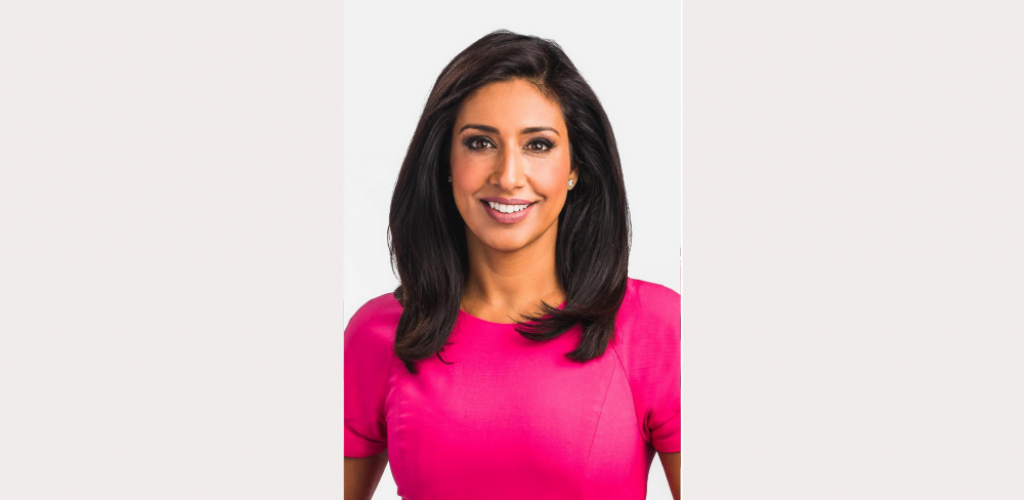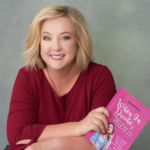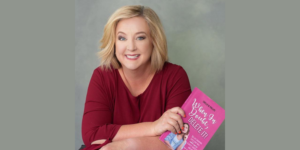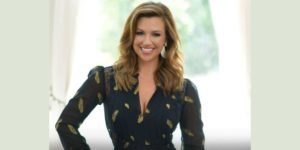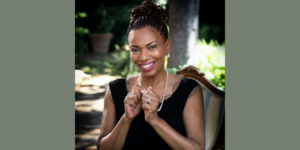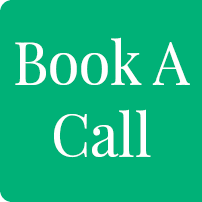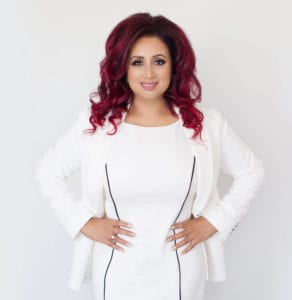Raj Girn: Hey, guys, thanks for tuning in to another exciting episode of the ‘Transform Your Confidence Show.’ How effectively we communicate with others determines how respected we are in the professional arena. Time and time again my clients come to me with wanting solutions on how to do this better, so my goal in this week’s ‘The Transform Your Confidence Show,’ is to dissect the art of story-telling, which I strongly believe is at the crux of doing this right. If this is something that you struggle with, then this week’s 2-part series is for you! The theme is Media & Communications and the series is entitled: “How To Create A Compelling Story To Engage The Right Audience!” My guest is one of today’s revered storytellers, a multi-award-winning journalist, and the news anchor for Global News, Farah Nasser.
Here is Part One of our conversation:
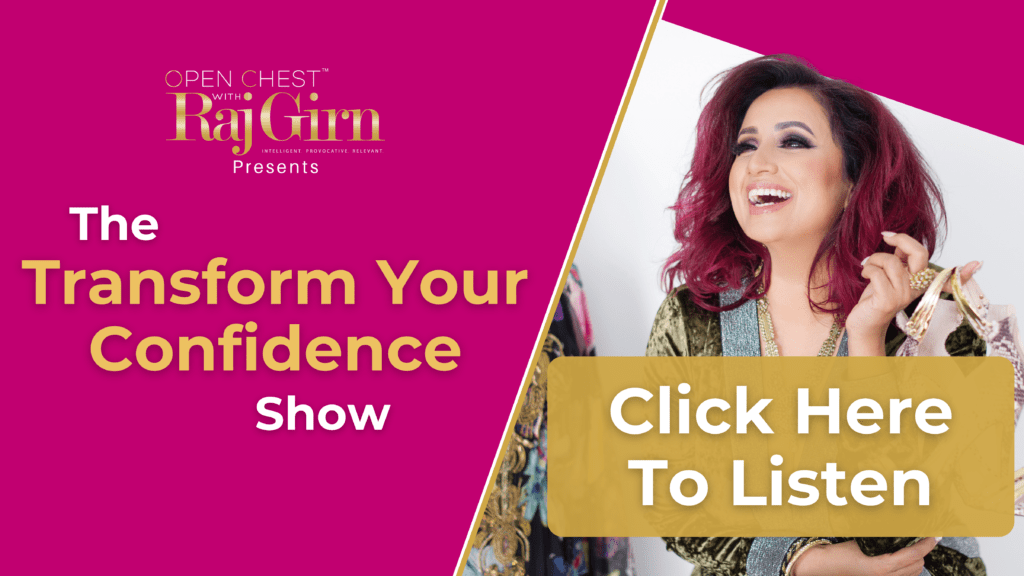
Raj Girn: Farah Nasser, my darling, I am super excited to have you on this show as I’ve had you on so many of my other shows. Welcome, welcome, welcome.
Farah Nasser: Thanks for having me. And I can’t wait to have another conversation with you. I feel like so much comes out when we chat and you always catch me in these interesting moments in my life. So I’m very excited to be part of this today.
Well, let me just dive right in then. Just want to kind of give context to our discussion for everyone that’s listening, watching, and reading this. With our world being heavily reliant on how authentically we communicate with others, doing so in the professional arena has become mandatory because its workforce that we live in today demands social responsibility with EDI — equity, diversity, and inclusion. As a result, my goal with today’s episode is to dissect the art of storytelling, which I believe is at the crux of doing this right. And let me kind of explain this to all of you guys before I dive in with Farah.
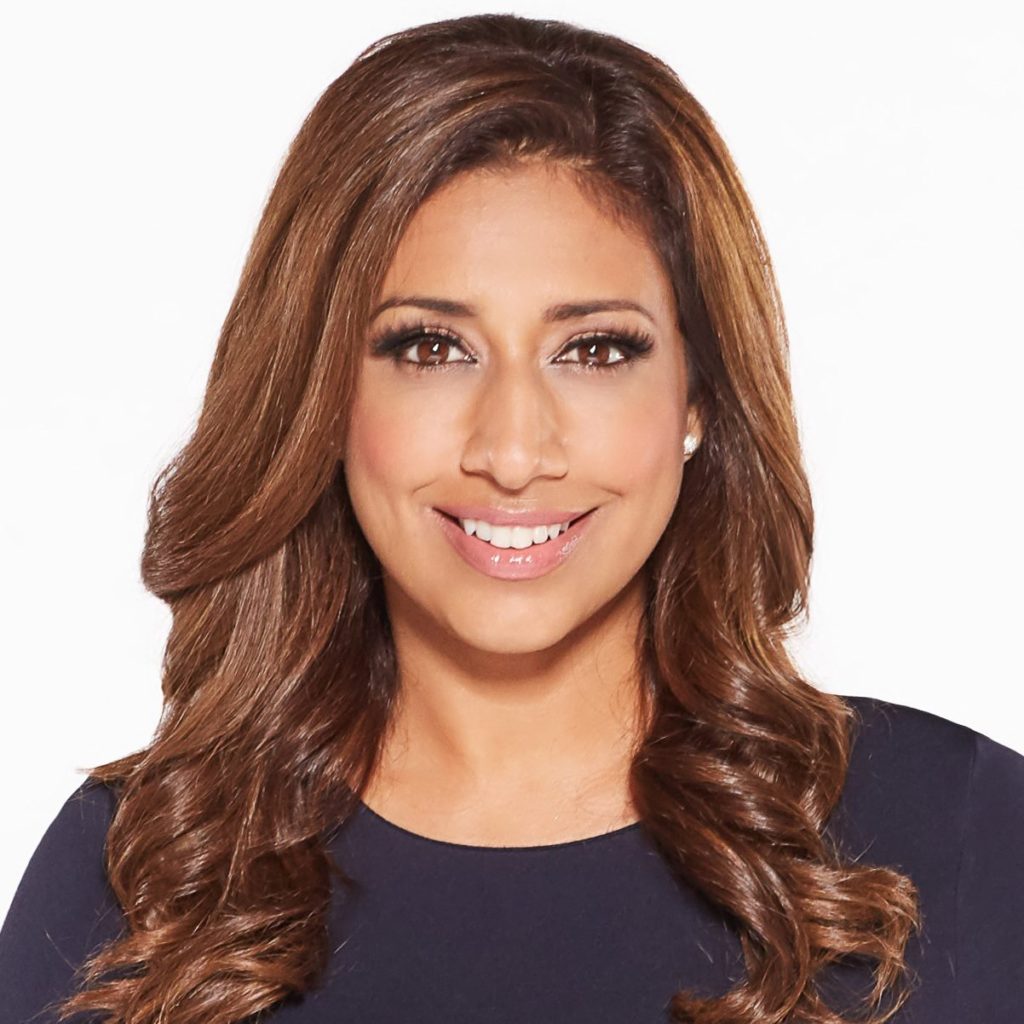
The digital information and social media age that we live in today does not take any casualties. You are cancelled before you know what you even did wrong. And I feel that this is really unfair and a reason why I wanted to have this discussion with Farah, because how can we be expected as people to do things right if we aren’t really told with the appropriate resources to know when we’re getting it wrong? A big discussion that requires a big personality to break it down. Farah is a woman I both admire and whom I’ve known since you know her time back at Rogers Communications in Mississauga, and before she became the face of Global News as one of its celebrated anchors.
Farah, welcome again, sweetheart. I couldn’t think of anyone I’d rather broach this topic with than you, considering that not only are you academically trained to tell stories, but you tell them every single day to a mass audience that trusts you. So are you ready kind of break this down for everyone that’s listening, watching and reading this?
I’m ready. I’m ready and I`m honoured to be on this.
Oh, thank you, sweetheart. So my first question for you is a very elementary one, one that we all think that we get right. But oftentimes we don’t. And the proof out there is very rampant across social media and across the online sphere right now. So I want to ask you this. What actually is storytelling? Your take on that.
I think when people think about storytelling right away off the bat, they think about maybe telling other people’s stories. But I think storytelling has a lot to do with interpretation and how you perceive a story, whether it’s your own or someone else. And I think it also has to do with perspective, Raj, because you bring a different perspective when you’re telling someone stories. But I think given I mean, what I think about our community and my heritage and my ancestors and the stories that came before us and, you know, weave together to make you who you are and make me who I am.
Storytelling is purpose. It’s love. It’s a path. And it can also convince you to see something that you wouldn’t normally see. So not only just walk in someone’s shoes, take your socks off while you’re walking in those shoes to really understand where somebody is coming from. And to me, that perspective is so key in what I bring to my viewers every day, showing that different perspective that they normally wouldn’t get.
“Storytelling is purpose. It’s love. It’s a path. And it can also convince you to see something that you wouldn’t normally see.” ~Farah Nasser
Absolutely. Let me ask you something then, based off of that. If you were to break down the elementary structure of how to construct a story, what would you say to people?
So to me, the most important two parts of a story are the beginning and the end of the story. Over my career, I’ve grappled with what is more important. So the beginning is the hook, is the way that you kind of get someone into that story. Right? And you know this, being a journalist. Like it’s the way you write to get people to kind of put everything around them down and to stop thinking about all the distractions and kind of get them to focus on this very thing because it’s like, okay, well, this affects me. This is interesting to me. I need to understand this a bit more.
But there’s also that end, that little nugget at the end when you’re kind of peeling the onion of a story that you get to that actually . . . because the viewer, the listener, the reader, usually it’s the end that they remember. So it’s that part of it. So there are two really crucial parts. And I struggle, which was more important, and I think they’re equally important. And then it’s the middle, which is the meat inside the sandwich of the story, which really gets you to understand the context of the story, that helps you understand those different perspectives, as I mentioned, and it helps kind of guide you, that holds your hand through the story from that beginning to the end.
So what I’m hearing you say is that the beginning is kind of what contextualizes what it is that you’re going to journey them through. The ending is kind of the destination of where you need to go. And all of that meat in between the two of them are the steps to guide the person to get to the promised land per say, the end of the story. Am I right with that assumption for people who are more visual?
I think that’s a really great way to put it. I think the beginning sometimes is not even the context. It just could be some sort of lever that kind of pulls you right in. It could have nothing to do with the entire story, but it’s kind of a way to say, “This is why you will care about this. Did you know about this?” And I think it’s different when we come to television and visual storytelling as opposed to writing. When we’re telling a story of visual storytelling, you’re taught lead with your best pictures, your best sound. And then when you’re writing, it’s more of, you don’t want to give everything away, but you kind of want to, as you mentioned, give that context. So I think it’s different depending on what platform you’re using. But in any case, no matter what the bottom line is, that is the hook that you’re going to get people in and they’re not going to read or listen further until you can kind of grab them in that space.
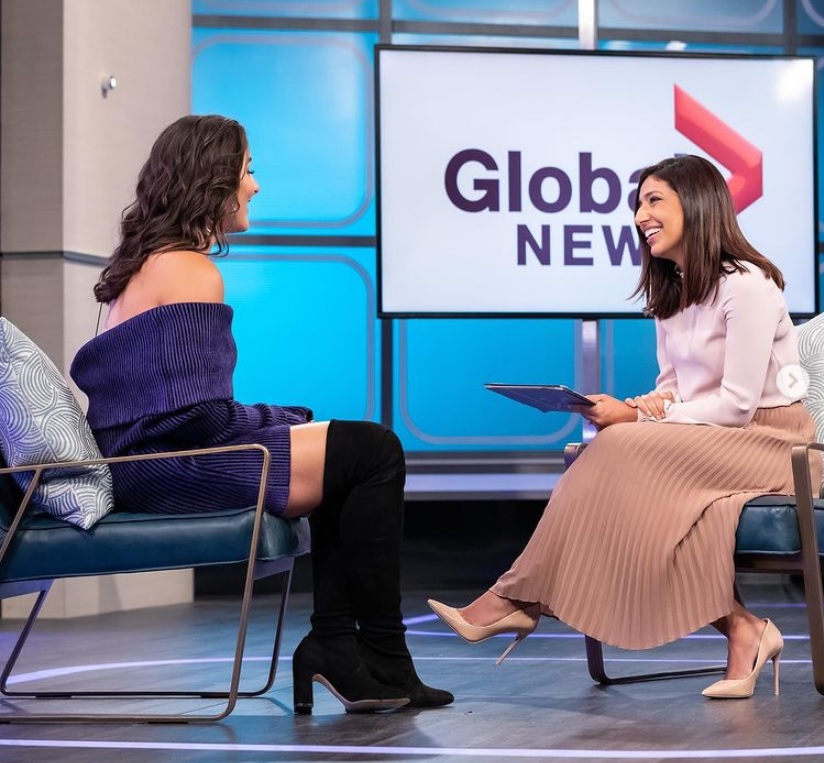
And how do we get that right for Farah? What do we need to know to get that right? What are some tips from your years of doing this? It’s a big one, right?
I think that’s the tough part, right? Because if you can’t hook people in with writing . . . There’s a deluge of information. I mean, there’s like a firehose of information, especially right now with COVID, with all the things that are happening. And to separate yourself and your story from someone else’s story, that is probably the hardest thing. You’ll come across so many different things that you read. So to me, it’s depending on who you want your audience to be and what you want that person to get out of it. And if it’s for a specific individual right, you know, I’m having a day where I’m multitasking as a mom. And I was reading about some tips to kind of get everything done when you’re at the intersection of motherhood and ambition. So I was just reading a few different articles today to kind of get my mind at ease after I meditated. And it was the ones that kind of made me feel like I am right there with you. You are not losing your mind. You are with me. So kind of pulling that viewer or that listener to say, “I am with you. What you’re thinking that is interesting or it could be here is something that you have not thought about. Here is something that affects you that is important to you. But you have not thought about it in this way. I was going to flip this on on its head for you.” And so I think there are there are different unique ways to do that. But at the end of the day, it can be the most challenging part.
Yeah, absolutely. Can you share a couple? Are there any kind of go-to’s for you to kind of get your mind around, how am I going to tell that story so that the reel people in authentically?
That’s a good question. I do that a lot with our news. So when I have a newscast, I write what’s called a throw or our writers will write the throw and I’ll look at it and change it. And it’s basically a lead or it’s the beginning of the story or introducing the story. So I have to think about why people will care about that story, what will matter. So there’s a recommendation right now by the National Advisory Council on Immunizations, and there’s a lot of misinformation out there. So how do I get people to care about that story today? So it might be to be authentic and honest with the viewer. Our job as journalists, I can even pull back the curtain completely and say something like our job as journalists is to give you the best information possible from the top experts possible, but today we can’t do that because there’s a lot of confusion that we’re not even sure what the right answer is.
And then people will be like, “Okay, wait, but what do you know?” But we can tell you what we know. What we know best is this, this, this. This is what we’ve heard from this person. You judge for yourself, but we want to give you all the information we have and be honest about it. So I think it’s for me and I I don’t know if I’m doing the right or wrong and it’s not everybody style, Raj, because there’s a lot of news anchors who don’t work this way. But for me, what has worked and what I feel like I’m being my honest self is when I kind of pull back the curtain. I am with you. I get it. I’m sitting there with you. And I don’t understand it either. But I’m going to tell you what I know to help you.
And I think that’s what works so well for you. And you have a very unique way of delivering information, which is actually what you’re doing as a news anchor. You’re delivering information in the most genuine and authentic way that you can. And I feel that this idea behind storytelling, for me, is ground zero. And it’s is the kind of storytelling I feel, not just as a journalist, but as any person that is providing information. So it could be someone that is in the workforce, it could be a salesperson, it could be the mother that is informing their child of something. I feel that these skills are important to know. And oftentimes we’re not really taught how to do them.
So let me ask you this question, because, a lot of people, with the barrage of content and information that everyone has access to as well as everyone having access to be the storyteller today, we don’t always know when we’re getting it wrong. And the thing is, its kind of like a lot of diarrhea is kind of out there right now when you’re kind of trying to figure out what makes sense, what doesn’t make sense, and why. So let me ask you this from your perspective, when we get it wrong, what does that actually mean? Like what effect is the wrong having on your experience?
Yeah, I mean, if you’re talking about misinformation, is that what you’re kind of referring to? It has been . . . Sorry, go ahead. Is that what you mean? Is that what I think?
I think that could be a part of it. The other part of it could also be the way that you deliver the message. It could be disingenuous to somebody because of the fact, as I mentioned off the top of our conversation, we’re living in a world that’s hypersensitive to the narrative that we live in individuals. Like never has there been a time in history when that has been so prevalent as it is today. So it may not be as big as misinformation. It could be the way that you tell the story. So I don’t want to put words in your mouth. Your experience, you tell me.
I think there are two ways. I think the misinformation thing comes to me right away, because I think there’s a real need to feel relevant these days, especially when we’re so isolated. I think we’re all longing for that connection. And I think right now there are people who maybe will share more social media or will put out blogs more than they normally would, which is in a way awesome because there’s more content out there. But I think you have to be careful with what you do. Because I think you have to know that whoever your audience is, you have to be authentic, which you talk about a lot, and honest. But you also have to know when you’re not an expert at something. You have to know when to say no.
“You have to know that whoever your audience is, you have to be authentic, which you talk about a lot, and honest. But you also have to know when you’re not an expert at something. You have to know when to say no.” ~Farah Nasser
You know, it’s funny, we were talking the other day about media experts. How you will come across certain ones who, even if it’s not their area of expertise, they’re happy to talk about it. But you can see right through them when you’re asking them questions, what what they know and what they don’t know. And I think it’s okay to not know things, but just to kind of be honest about it. I’m lucky my job is to be a I-don’t-know-it-all. My job is to ask the questions. I’m not supposed to know everything, but I just ask the right questions. So I’m I’m lucky like that. I’m not the expert. But when you are the expert, you’re expected to say things. And I think there is a real worry right now about asking the right questions and about offending people when you’re asking those questions and saying the wrong thing. And you’re somebody who has a lot of empathy and will think about the different perspectives of all the people around, like what I just said to you earlier in this conversation, “God gives us things we can handle.”
And you said, “Hold on a second. There’s people in India right now who cannot handle what they have.” It so true. And I think it’s that way of thinking. Right? It’s that extreme empathy. It’s that way of thinking about all the different stakeholders and groups around you and what you’re saying, how your message resonates. There are so many times there are things that I want to post on social media, and I don’t because I don’t want to make people feel bad about their situation. I have a job. There’s a lot of people right now who don’t have jobs. I just I don’t see how how flaunting that, you know, even when I got my vaccine, I really struggled with whether I should post or not because some people didn’t have a vaccine at that point. And I think that’s the way we’ve got to think about each other right now. We’ve got to help each other. We’ve got to think in terms of a collective, this all for one approach, which, you know, has been missing and has been forced upon us during this pandemic.
And I think that’s probably one of the few really wonderful things that has happened, is that we are actually being forced to think and consider other people outside of our silos. Like, I don’t think that Mother Nature has forced that card the way that we have experienced it in our lifetimes. That’s the good I feel that has come out of this, which is why I feel having this conversation, especially with you, about storytelling, like how to communicate information is really important. Especially, as I mentioned, we’re sitting in kind of the digital era. We’re sitting in the age where everyone is a media company. Today, everyone has access to soapbox or collaborate. It depends on the choice that they decide to take. I believe in collaboration, but there’s some people that believe in soapboxing and both have merit. And it comes back to it comes back to who are you speaking to? What are you sharing with them and what’s the impact that you’re looking to accomplish?
And I feel these are the elements that for me that keeps me kind of within a box, that is being fair and equitable, relevant, meaningful and telling a story that I feel comes from an authentic place for me, because that’s always the number one question I get asked Farah, like how do you how do you be authentic? Let me ask you that question. I mean, I was going to ask you that question then later on in our conversation, but it’s come up now. So I’m going to I’m going to broach it now. You have to provide information to a large number of different types of people, but you need to somehow speak to all of them so that they feel like they are being spoken to genuinely about this information. How do you do that? Because you do it. I mean, you do it not not all not all news people do it, but you do this really well. How do you speak to everyone and be authentic in that delivery?
I think you said it. Like to me it’s more work to not be authentic. And trust me, earlier in my career I was that person. I was trying. I’d study these people and I’d try to be them. And it wasn’t until there was a light that clicked somehow. And I don’t even remember the moment I wish I did. But it was just kind of like, this is too hard. It’s so much to try to . . . And I see these people on social media with their all their filters and their perfect life. And to me it’s like that’s so hard. Like it’s just so hard. And I just don’t, right now to be honest, I just don’t have the energy with everything happening. I just don’t have the energy to put that on. So I think you have to come to a place with yourself where you have that confidence.
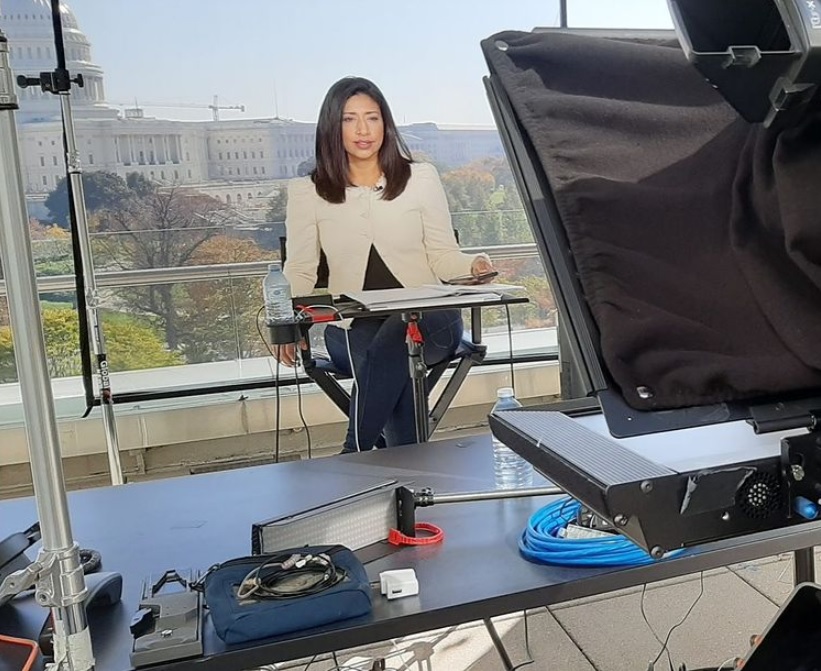
And I think that hit me a few years ago where it was like, this is who I am. And there were so many people, at every station that I worked for, that tried to change me a little bit or tried to change me this way. And it just never worked because it just it comes across. People can read it, people can read it when you pretend or when you’re trying to be this person or when somebody tries to change my voice or my clothing style, it just doesn’t . . . You can’t be yourself. And I wish I had a more articulate answer for you to be honest about how you can be more authentic. But I will just say that it’s just easier. It’s just so much easier. It’s a weight that’s off you when you can be your true self. And perhaps it comes a bit with age as well. I mean, you’ve known me for a long time. It comes certainly with age.
You know, I think you touched upon something that I really want people to be able to sit with, and that is this whole idea of what’s right. What’s authentic is what’s right for you. I think that’s kind of the key message of what you just said. Changing your voice, changing the way you look, changing the way you sit, doesn’t allow you to bring the energy and essence of your being, which is what you’re doing in that. If you want to get really philosophical or go a little bit deeper, you’re putting on display your entire essence when you’re in the position that you are when you are sitting in front of a group of people and you are communicating something. So your communication — and this is the other thing — communication isn’t just the words that come out of your mouth. It’s all the other things. It’s your cadence. It’s the delivery. It’s how are you showing up physically. And it kind of allows you to also know how you feel mentally or spiritually.
And when they don’t match in who you are, the cocktail of who makes you who you are, that offness is very easy for people to see. So I think you said something so fundamental and so simple in answering that question that. I really want everyone to sit with that, because you rightfully said it’s really hard to have that perfect life that everyone’s having on social media. Like, that’s a lot of work. So let me ask you another question. If you consider that the essence of storytelling is to have an audience to tell it to, this pulls in an even bigger challenge in that how we tell the story differs depending on the audience. Now, we’ve kind of broached that topic already. Can you explain this? Because it’s one of the biggest reasons for epic failure during the storytelling process.
People tend to tell the story the exact same way to all audiences instead of maybe perhaps customizing the approach to telling the story specific to the audience that you’re speaking to. So, for example, you speak a lot of places. Some of them are religious, some of them are communal, some of them are entertainment based. And then you read the news. There’s different elements of you that come out, nuances of your personality that come out, so that your personality aligns with somewhat the expectation that the audience has. So I want to ask you your insights here to help people know how to navigate this behemoth that we call facing the public and facing the public for different reasons. Now, you’ve talked about, how you’re just yourself, but there are elements and different situations where there’s different parts of who you are that surface for that particular audience. So tell me your thoughts on that.
That’s such a good question. And I think if there was one way to answer it, it would be to essentially do your research and find what you care about with that audience. So if I’m speaking to a group for women, for example, which I do a lot of work in that space. And I mean, obviously I care about that, but that’s a compartment. That’s a part of me. And that kind of lights up and comes out. And if it’s an organization I’m speaking with, like I do a lot of research before I get on that stage to find out what resonates with me, with that particular organization, with the charity work that I do. And if something doesn’t resonate with me, I’m thankful to be at a point where I can say this isn’t really part of who I am. This is my value. I’d more value this.
I want to spend my time on this and I’m lucky to do that. But, you know, it’s not easy to even with . . . and I can compare this to kind of with with years, too. Sometimes you’re a side story as a reporter and it’s for a wider audience, but it’s on a specific topic and you’re not super keen or interested. And I research it and find something. There’s always something. There’s always some nugget with that audience that you’re interested in or that you can kind of hook. You know, we talk about the hook at the beginning of the story that you can hook yourself to. That you can hook the zeitgeist or your consciousness to, that that little hook. And it always exists. You just have to kind of find it. So to me, I would say do research and find that hook and find that tunnel, that pathway that’ll take you there.
Oh, my God. You know, I’m getting chills just hearing you say that because I think you just kind of shared something else that a lot of people don’t really understand fully. And I just want to kind of reiterate what you said in terms of my understanding of it, and that is find your connection to the thing that you’re trying to communicate. Like find your personal connection to that. Because if you do, you’ll find your way to connecting with the audience that you’re delivering that to. It’s very powerful that you just shared that because that is another thing that people are challenged with. First, it’s always being authentic and not coming across as being fake. The second thing is being genuine. Right. And this is where you just shared what you did is how do you become genuine if the information that you’re sharing you don’t have a connection to? So find that connection. Do the research, find the connection because that connection will lead you to connecting with the audience. It’s very powerful. I love that you shared that with everyone.
“Find your connection to the thing that you’re trying to communicate, find your personal connection to that. Because if you do, you’ll find your way to connecting with the audience that you’re delivering that to.“ ~Raj Girn
And there’s just one more addition if I could just make, if you don’t mind, to that. It doesn’t mean that when you’re telling the story, you inject yourself into it. That doesn’t mean that at all, because to me, as a journalist, I’m more interested than interesting. It’s not about me. It’s about the story that I’m telling and what I’m doing. You might have a personal connection to it and It might be about you. There might be, but it doesn’t have to be like if that part scares you, it doesn’t have to be. It’s just you and your mind and in your heart and your being having that connection to whatever it is that you’re doing. Right. It doesn’t even have to be overt for everybody to know. It’s just you being sold on it essentially.
Right. And that helps with the delivery. It helps your cadence. It helps with all of the above. Let me ask you this. I want to take you a slightly into a different direction. Maybe add another layer onto this. When you add in the other layer of having to consider EDI, which you have to consider today, storytelling becomes even more challenging because we’re talking about many things — ethnicity, gender, sexual orientation, multigenerational values (which is become a thing which wasn’t a thing before), socio economic status, political and religious leanings. And the list just goes on and on and on. Bearing that in mind, what should people navigate when needing to create a cohesive story that speaks with social responsibility but without losing the authenticity?
If I could say that in one word as well, it’s conversations. I mean, you could read on the Internet, you could go to the library back in the day, you could get all these books. None of them matter. Like, really, they don’t matter. What matters is these conversations. When I grew up, my dad would describe people as library books. Like he would say, everybody has a story, everybody is wealth of information in their own experience, in their own lives, learn about their lives because their lives, their experience will educate you. And I think that is so crucial right now to have these conversations. There are so many times where I’ve been confused. Maybe in terms of with the black experience, with indigenous experience where I don’t understand it. Even as a South Asian woman I am at a point of privilege, I don’t have the same needs and challenges that other people have. And to fully understand that, I have to talk to people. And now I’m in a position where I can interview people.
But you may have a connection where you can get there. And if you don’t want to even talk to people, listen to their stories, listen to their podcast, listen to conversations you normally wouldn’t listen to. Don’t read about it, listen to their voice, listen to how they speak, really connect with them and understand where they’re coming from. I remember I had a really tough time. I was doing a story. It was with the LGBTQ community and it was about the term queer. And I was having a hard time understanding it. And I just couldn’t fully understand what the whole difference is, which is how I saw gender and how other people saw gender. And it was through a very uncomfortable conversation I had (a part of it was on air and it was it was off air.) But it really was tough in the moment but it shone this big light in a subject area where I got to know more about and got to understand more about, to learn more. I’m so grateful for that. And even on air, I’ve made mistakes when I have these conversations and have said stuff. But I’m okay with that. I’m okay with making mistakes. You know, as my daughter says, when you make a mistake (she’s five) you brain grows. And it totally does grow. Right? It helps you understand. So my brain’s grown.
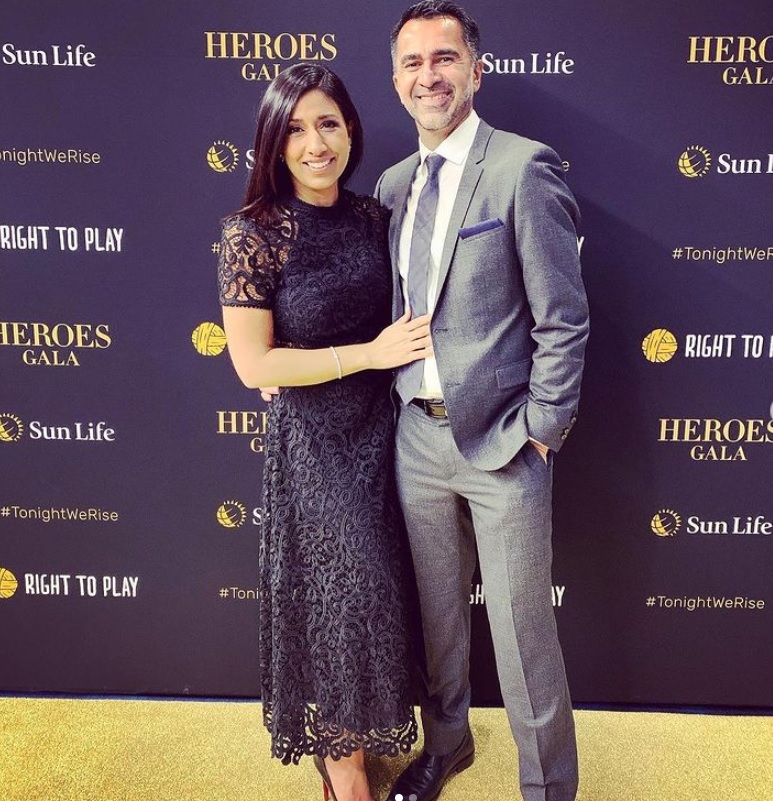
Absolutely. But what about people who don’t get the opportunity to be forgiven for those mistakes? People are totally into the whole kind of cancel culture, people bandwagon and they beat people up online. You know this. I know this. We’re seeing this whole new kind of thing that’s going on because at the end of the day, we don’t all get it right all the time. We don’t know enough. We weren’t taught in school. There are no courses out there that are mandatory that everyone in the world needs to know how to be sensitive to other people’s sensibilities because oftentimes we don’t know what they are. So, what are your thoughts on that? Because that’s a big thing.
Yeah, I agree with you. It is a big thing and it’s very difficult when you don’t . . . I mean, look, Raj, there are things that you do know. There are things that you can have conversations about. And when you have a blind spot, I mean, take an unconscious bias test. They’re free. Harvard University has one on online. It’ll take you about an hour. You’ll get it done. Learn about what your biases are because you have them everywhere. I have them. You have them. We all have them.
I love that. Can you said that again about . . .
Learn about it and understand it and focus on it. And, I know you can say that we don’t always know what the sensitivities are, but there are times where we do now. There is a portion where you have a question mark where we don’t know and we’re scared to say things for fear of being canceled. But again, I think you have to come at all of it from an I-don’t-know perspective. Think as a journalist and say, “I don’t know. I’m not the answer just because I live this life it’s not . . . ” And ask the questions, but ask them in a way that’s disarming. If someone’s wearing a hijab, don’t say, “Can I see your hair or why can’t I ever see your hair?” There are ways to ask things. And I think if you were to ask it in a way where you say, “I really don’t want to offend but I’m just trying to learn,” I think anybody would be able to kind of bring the guard down and be like, “let me help you learn.” I mean, it’s what so many people do. So anyway, that’s my perspective on that.
“If you were to ask it in a way where you say, ‘I really don’t want to offend but I’m trying to learn,` I think anybody would be able to bring the guard down and be like `let me help you learn,`” ~Farah Nasser
I love that. I love that. I think, folks, if you’re listening to this, the piece that I would love for you to take from this is preface that you don’t know before you broach a topic that you’re not too familiar with. I think that’s a great tip, Farah. I love that.
To contact Farah Nasser: Twitter, Instagram

